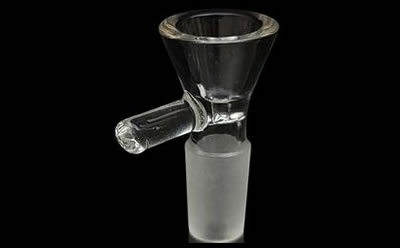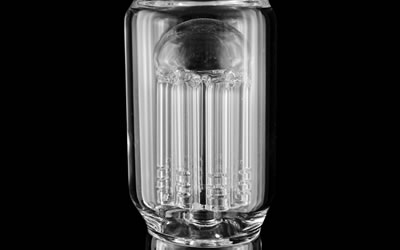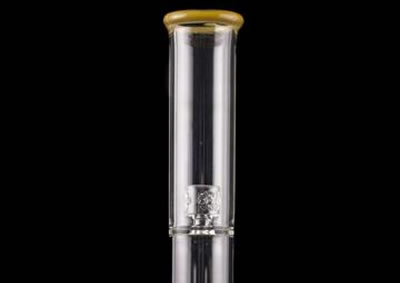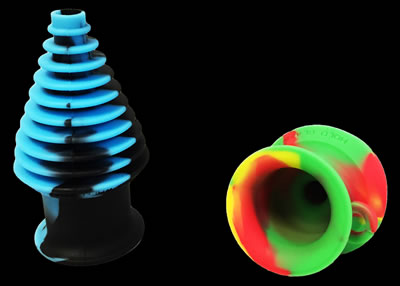Anatomy of a Bong 101
Bongs have been around for longer than you’d think. And, because they’ve been around a while, there’s plenty of styles, types, and sizes on the market.
Between the shapes, sizes, materials and extra features, there can often be a lot of choice. Which, for some people, can be a little overwhelming – especially if they’ve never considered the fundamentals of a bong before.
So, to help those looking for their first bong – or those wondering what it would be like to try them – we’ll dive into the basics!
Also, feel free to check out our accessories section for the bongs that we have in stock at your preferred location.
Bowl Piece

The bowl piece’s job is a rather simple one. Storage, first and foremost. When you’ve ground down your weed, this is where you’ll pack it.
Bowls come in a variety of shapes and sizes, much like the bongs themselves, but they’re mostly made from glass or metal with a hole at the bottom.
Many newer bowls have built-in glass screens, eliminating the need for smoking through thin-wired metal screens that need to be replaced often.
Ash Catcher

The name of this one doesn’t leave much room for mystery, that’s for sure. The ash catcher is another simple aspect of the bong. Its job is to catch any ash from your bowl.
While simple, it’s an important job as it prevents the ash from getting into your bong – and into your mouth! Nothing ruins a good high like ash in the mouth. Trust us.
But, the ash catcher – despite the one-note name – actually performs a few other functions. Some ash catchers even come with built-in percolators to filter the smoke!
They’re also very easy to clean – and because ash catchers are the first place tar and gunk build up, regular cleaning of this will mean you won’t have to clean your bong as often!
Joint

Next on the list is the joint. This handy piece connects the bowl to the down stem. It’s simple but essential and will almost always come with any bong you purchase.
Joints can come in a few sizes, ranging from 10mm to 18mm. But whatever size you choose, if you have a male jointed bowl, you will need a female joint (and vise versa).
Down Stem

If there’s one aspect of your bong’s anatomy you remember, it should be the down stem. Ask anyone and they’ll tell you that this is the most important part of your bong.
At its most basic, the down stem is just a hollow glass straw that leads from the joint into the bong chamber. However, down stems can also come in far more intricate designs and, like the ash catcher, can have built-in percolators to cool smoke. Whatever the design, they remain an entirely crucial part of the bong.
Percolator

We’ve mentioned the percolator a couple of times already. So, as you may have guessed, it can come built into your bong, or bought as an attachment.
The percolator serves to produce additional cooling and filtration to your bong after it passes the water at the end of your stem. For this reason, you may find yourself spending a little more time cleaning your bong. But it’s worth it in the end.
There are many types of percolators on the market, so it may be best to test a couple out and figure out what works best for you. But, in general, we would recommend avoiding percolators with an abundance of small holes if you don’t want too much cleaning.
Splash Guard

Splash guards are often reserved for bongs with heavy percolation. As you may have guessed from its name, it is used to prevent water from bubbling upwards and getting through the mouthpiece.
Some bongs will have bent necks, which lessens the need for a splash guard, as the water will already find it difficult to travel to the mouthpiece.
Mouthpiece

The final piece of the puzzle is the mouthpiece.
Traditional mouthpieces are horizontal and found at the very top of the bong. However, with the evolution of bongs, angled mouthpieces are becoming more and more common. They have the added bonus of not breaking your back as you hunch over the bong for your next hit, too!
The mouthpiece, of course, is where the magic happens – where the filtered smoke reaches its destination. So, you’re going to want to make sure whatever mouthpiece you choose is comfortable and suits your needs.
Understanding your bong
Hopefully, we’ve provided a basic understanding of how a bong works and helped you think about what you should expect from your future bong, if you were to purchase one yourself.
While we’ve covered the basic anatomy of a bong, there’s often a lot of variation between individual bongs. So, if purchasing your own, make sure you do your research! If you can, test a few out before you commit. And, if not, then you’ll be able to get an idea of what you like based on the time you can dedicate to cleaning and the frequency of use.
If you’re a beginner, then there’s plenty of all-in-one bongs out there to ease you in. But, if you’re looking to step it up a notch, then you can also find customizable bongs. And knowing the above parts and what their roles in the anatomy are should help.
Enjoy your bong experiences!

